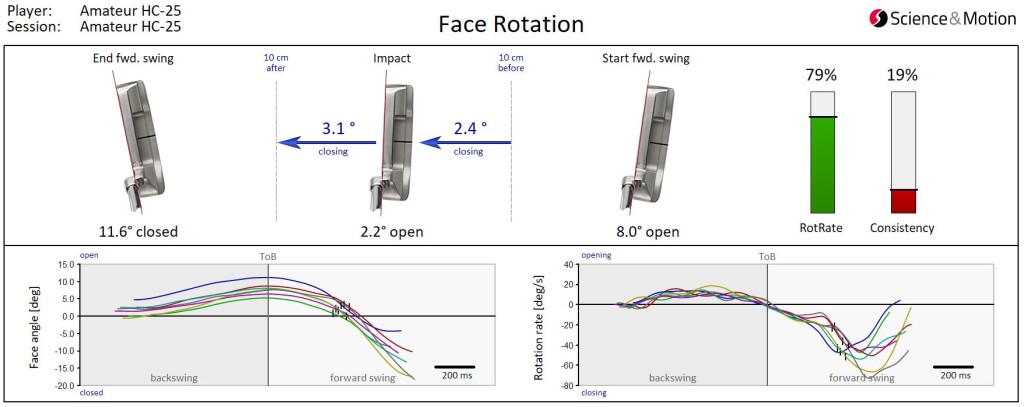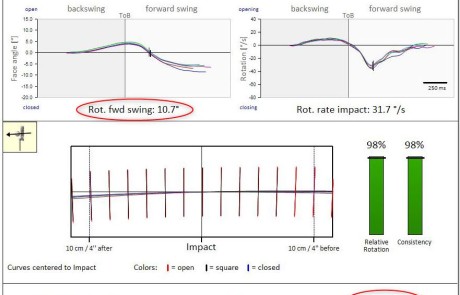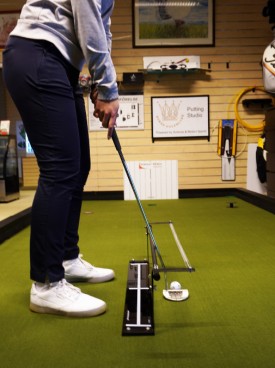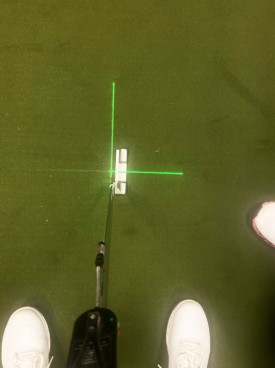The Role of Face Rotation in Putting
2nd part of the 'Fundamental Putting Instruction' by SAM Academy
Mar 12, 2024. The Science&Motion Academy has analysed the putting data from more than 150 Tour players with SAM PuttLab – The world’s leading putt coaching and training system. “Based on the data we collected, we have a deep understanding of the critical factors important to putting performance”, said Christian Marquardt, movement expert and founder of the Science&Motion Academy. “We want to provide golf coaches and golfers with some ideas on how to improve their coaching and training”.
This second part of our 'Fundamental Putting Instruction' is about the crucial role of face rotation in putting.
Frequent Errors and Consequences
Directional problems in putting are often related to irregular face rotation during the swing. These problems manifest themselves in SAM PuttLab data as opening and closing rates that are too high or too low, inconsistent rotation through impact (pull or push), or oscillations in the face rotation curves around impact. In contrast, a regular rotation would be symmetrical, consistent, and of moderate magnitude.
Example of irregular face rotation:

Additionally, many golfers think that it is natural to actively open and close the clubface during the swing. However, this is a complete misunderstanding. The natural absolute face rotation is directly linked to the natural arc of the putter path. This is a result of the putter swinging within an inclined swing plane, resulting in a projected ellipse (arc) onto the ground. The more this plane is tilted, the more the face appears to open and close in a vertical view.
However, this absolute rotation against the target line can be viewed more as a kind of optical illusion, as the putter can still be completely neutral and perpendicular to its swing plane. If the putter is moving neutrally inside of its swing plane, the relative rotation is in fact zero.
Example of significant absolute rotation, but a relative rotation very close to zero:

Ways to Improve Face Rotation and Putter Path Direction
Since additional face rotation is induced by rotating the putter around its shaft, the task is to keep the hands quiet. A first exercise is to simply swing the putter back and forth without a ball, feeling your shoulder move up and down during the swing. Remember how limited the face is open in the top position and closed in the end position. Then hit a few putts without a hole, and compare the face angle at top and finish position. Then, try to hole putts with the same stoke and feel how quiet the hands can be.
A very efficient tool to support a neutral swing plane is the Perfect Stroke putting aid from Mark Officer. The face of the putter will behave very neutral if you only slide the putter shaft up and down the rail. Then you introduce a ball and start playing straight putts. You will be surprised how quickly the quality of ball direction will improve.
The Perfect Stroke training aid:

Alternatively, you can use a line laser that is mounted on the shaft of the putter (e.g. LaserPutt) or putter head in some cases. This laser projects a straight line onto the ground, and as the putter is moved back and forth within its neutral swing plane, the line always remains straight. If in contrast, the line turns inward during the backswing, then the putter is opening relative to its swing plane, and vice versa.
The Laser Putt training aid:

We hope you enjoyed this content, please stay tuned for the next part of our “Fundamental Putting Instruction” coming in a couple of weeks.
The first part, introducing the “Importance of Aim in Putting and Putter Fitting”, can be found here>
